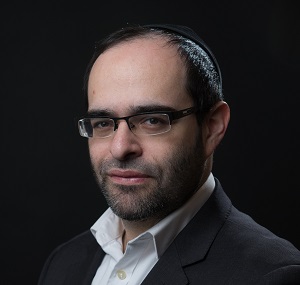A Therapist’s Guide to Practical Teshuvah

We’ll need to ask ourselves a few questions. The first is, “What exactly are we doing wrong?”

A
lot of discussion around this time of year is about teshuvah. People talk about it, think about it, and try to figure out exactly how to do it. At some point, we usually end up noticing that the traits and actions we intended to abandon last year are still very much affecting our lives this year. We may even notice that they’ve been hampering us since significantly earlier than last year. They may have been with us for decades, surviving every attempt to leave them behind. It can be disheartening, to say the least.
The Rambam tells us that one of the integral parts of real teshuvah is commitment to not repeat the aveirah. How can we make an honest commitment to leave the aveirah behind if we know that we’ve repeated the same actions for years on end? This thought process is very common, and can leave people feeling hopeless and guilty. It can even stop people from trying to change anything. After all, what’s the point? Experience has shown us that change isn’t something we can do.
Although that’s a decidedly pessimistic way of thinking, the core concern isn’t wrong. If commitment is part of the process, there needs to be a plan in place to buttress it, so we can avoid repeating what we’ve done. We have to believe in the possibility that the a plan will work. Even if it doesn’t, we have to come up with plan on some level for our teshuvah to be considered a serious attempt.
How do we create and follow through on a realistic plan? We need to understand what’s behind such a commitment.
Identifying the Problem
We’ll need to ask ourselves a few questions. The first is, “What exactly are we doing wrong?”
Without knowing specifically what we’re trying to uproot, we can’t commit to avoiding it or plan to do something else. An important part of this is clearly identifying whether or not the behavior in question needs to change. This can be done by consulting with a rav and learning the relevant halachos.
The clearer we are on what needs to change, the more likely it is that we’ll be able to productively address the situation. Even if we identify several actions that need to change, it may be smarter to limit our focus to one. We may have to figure out what takes priority.
We can also do teshuvah for one specific part of an aveirah. Saying, “I won’t speak lashon hara on my way home from shul on Shabbos morning when walking with my friend” is a more sustainable commitment than “I won’t speak lashon hara at all.” A realistic plan will be based on something sustainable; if it’s based on something unspecific, it is likely to be unrealistic.
How Does the Problem Work?
Once we’ve identified a specific action to work on, we need to understand how the action arises. Where are you when the actions in question come up? What time is it? Are you by yourself, or with others? How are you usually feeling? Part of the commitment to avoiding the action is knowing what the triggers are and how you can either avoid them entirely or react to them differently.
For illustration, let’s work with the example from above. A person has a tendency to speak lashon hara when he’s walking home from shul on Shabbos morning with a particular friend. There are several potential triggers that may contribute to this. It’s a familiar setting for this person, which may itself be a trigger. “I know that I’m going to do this because that’s what I always do.”
Perhaps he can avoid the triggering setting, or change the setting so it’s less of a trigger. Find a different walking partner. Discuss the problem with him. Change the system in an intentional way to change the outcome.
There are also internal triggers. There’s the emotion of wanting the pleasure involved. He may think to himself, “What’s the point of fighting it? I’m going to give in eventually anyway,” or, “It’s not really such an aveirah, in my situation it’s okay.”
When he’s walking home, he knows that: a) speaking lashon hara is satisfying in some way; b) it’s happened before and will likely happen again, which weakens his resolve against it for right now; and c) he may be able to convince himself that it’s not so bad. Maybe it’s even a mitzvah. It’s almost a done deal.
Changing Our Thoughts
There are many ways of addressing the problems raised in these examples, and may different mindsets a person can adopt. He will need to be creative, because there are also many ways a person will justify giving in to doing something that goes against the values he’d like to live by.
We call these cognitive distortions. They’re thought patterns or themes that come up and stop you from thinking clearly. We can change them to thoughts that work for us, like “Even if I may slip at some point, I don’t have to do it now.”
At this point, we should have some sort of idea of what kabbalah al ha’asid looks like. The hard part is putting it into long-term practice. Support makes it easier. Have a friend to compare notes with. Getting a group to work together on similar challenges can give you a sense of community and collective purpose, which can keep your motivation going. Support can help you keep your belief in the possibility of change intact through the challenges that are bound to come up.
Many derashos around this time of year ask us to consider, “How can I do teshuvah? I’ve gone through so many Yamim Noraim without lasting change.” Hopefully, by following through on these steps, we’ll be able to confidently question that assertion. Real and lasting teshuvah is possible. By taking small steps, we can make real progress, and become more closely connected to Hashem in the process.
Yeshaya Kraus is a therapist, writer, and speaker living in Far Rockaway, New York.
(Originally featured in Mishpacha, Issue 1031)
Oops! We could not locate your form.







